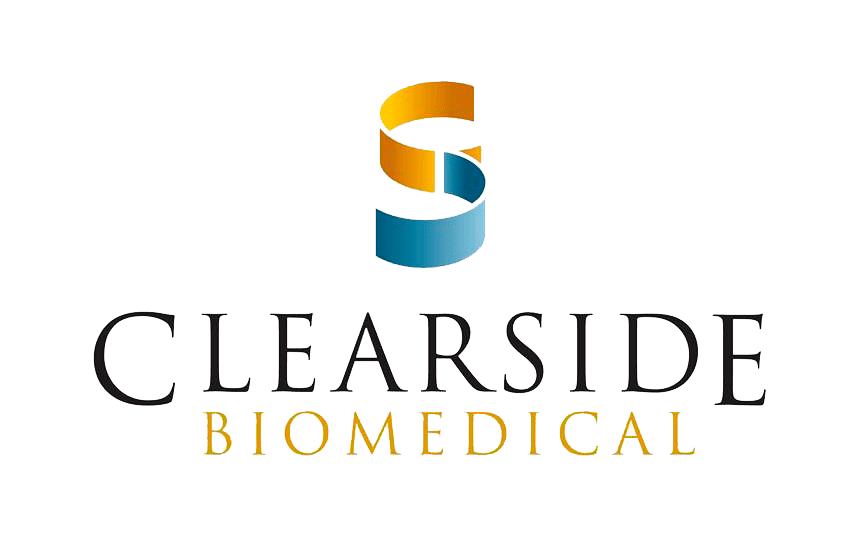
Clearside Biomedical, Inc. Announces Positive Preliminary Phase 2 Results in Patients With Macular Edema Associated with Retinal Vein Occlusion
Print 26 April 2016
Patients receiving a single treatment of ZUPRATA™ together with EYLEA® qualified for 60% fewer additional EYLEA retreatments over a 3-month period (p=0.013)
Patients in the ZUPRATA + EYLEA arm achieved 19 letters of improvement in Best Corrected Visual Acuity as compared to 11 letters of improvement following EYLEA alone
 ALPHARETTA, Ga.--Clearside Biomedical, Inc. today announced that its Phase 2 clinical trial evaluating concomitant administration of suprachoroidal ZUPRATA™, Clearside’s proprietary form of triamcinolone acetonide, together with intravitreal aflibercept (EYLEA®), for the treatment of macular edema associated with retinal vein occlusion (RVO), achieved its primary endpoint. In preliminary results from the trial, patients in the active arm (those receiving concomitant administration of ZUPRATA and EYLEA) qualified for approximately 60% fewer intravitreal EYLEA treatments than those patients in the control arm who initially received EYLEA alone, during the three-month observation period following initial treatment (p=0.013). The trial, known as Tanzanite, is the first controlled, masked, randomized clinical trial conducted in patients with RVO where drug was administered through the suprachoroidal space.
ALPHARETTA, Ga.--Clearside Biomedical, Inc. today announced that its Phase 2 clinical trial evaluating concomitant administration of suprachoroidal ZUPRATA™, Clearside’s proprietary form of triamcinolone acetonide, together with intravitreal aflibercept (EYLEA®), for the treatment of macular edema associated with retinal vein occlusion (RVO), achieved its primary endpoint. In preliminary results from the trial, patients in the active arm (those receiving concomitant administration of ZUPRATA and EYLEA) qualified for approximately 60% fewer intravitreal EYLEA treatments than those patients in the control arm who initially received EYLEA alone, during the three-month observation period following initial treatment (p=0.013). The trial, known as Tanzanite, is the first controlled, masked, randomized clinical trial conducted in patients with RVO where drug was administered through the suprachoroidal space.
Secondary endpoints in the trial included the mean change from baseline in best corrected visual acuity (BCVA) and central subfield thickness. For the BCVA endpoint, at month 1, patients in the active arm had an average improvement of approximately 16 letters in BCVA, or over three lines on a standard eye chart, compared to approximately 11 letters of improvement, or just over two lines, for patients in the control arm, each from their respective baseline measurements. At the end of the three-month observation period, patients in the active arm had an average improvement of approximately 19 letters, while patients in the control arm maintained their same level of improvement at approximately 11 letters.
In the secondary objective of measuring the central subfield thickness, at month 1, patients in both arms showed a mean reduction of over 400 µm. Patients in the active arm maintained this level of reduction throughout the three-month trial, while patients in the control arm had smaller levels of reduction as the trial progressed, with the mean reduction declining to approximately 340 µm for patients in the control arm beginning in month 2. In terms of safety results, there were no serious adverse events reported in the trial, and the treatment was generally well tolerated. Clearside plans on submitting the full data set for presentation at an upcoming medical meeting.
“The preliminary data from this clinical trial continue to provide support for the treatment of certain blinding eye diseases through suprachoroidal space administration of ZUPRATA and the potential for an effective and safe option for the treatment of RVO,” said Daniel H. White, CEO and President of Clearside. “Based on these results, Clearside intends to follow a 505(b)(2) NDA regulatory approval pathway and expedite the preparations for a ZUPRATA Phase 3 registration program for the treatment of macular edema associated with RVO.”
About RVO
RVO is a sight-threatening disorder resulting from the blockage of one of the veins carrying blood out of the retina. RVO is estimated to affect more than 16 million adults worldwide, according to a 2010 study published in the journal Ophthalmology, and it is estimated that RVO affects 2.2 million adults in the United States. In RVO, the blockage of a retinal vein can lead to poor blood circulation, low oxygen and sometimes inflammation in the eye. A blocked vein will leak its contents of blood and fluid. Bleeding within the retina and swelling from the fluid can result in macular edema.
About Clearside Biomedical, Inc.
Clearside Biomedical, Inc., headquartered in Alpharetta, GA, is a late-stage clinical biopharmaceutical company developing innovative first-in-class drug therapies to treat blinding diseases of the eye using Clearside’s proprietary suprachoroidal space (SCS™) microinjector to reach diseased tissue through the suprachoroidal space. Clearside holds intellectual property protecting the delivery of drugs of any type through the suprachoroidal space to reach the back of the eye. Clearside has a portfolio of clinical and pre-clinical programs using drug administration through the suprachoroidal space to provide a route of access to treat diseases of the back-of-the-eye like RVO, uveitis, neovascular age-related macular degeneration (wet AMD) and diabetic macular edema (DME). Clearside is currently enrolling patients in a Phase 3 clinical trial (Peachtree) for the treatment of patients with macular edema associated with non-infectious uveitis and has initiated IND-enabling studies for the treatment of wet AMD. Visit www.clearsidebio.com for more information.
All Portfolio
MEDIA CENTER
-
The RMI group has completed sertain projects
The RMI Group has exited from the capital of portfolio companies:
Marinus Pharmaceuticals, Inc.,
Syndax Pharmaceuticals, Inc.,
Atea Pharmaceuticals, Inc.

